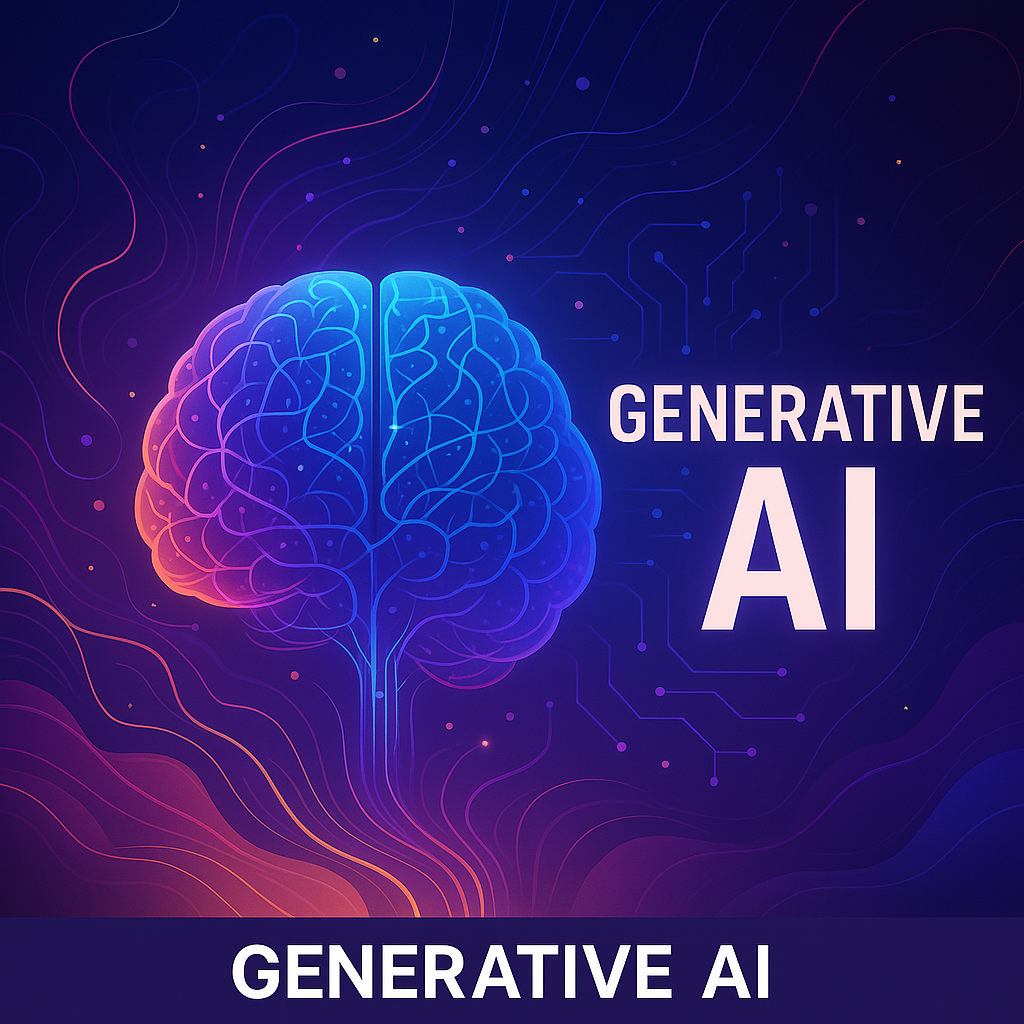Introduction
Generative AI is revolutionizing the way we create, communicate, and work. Unlike traditional AI, which follows predefined rules, Generative AI can produce human-like content—from realistic images and text to music and code. This technology is transforming industries, improving efficiency, and unlocking new creative possibilities. But what does this mean for individuals and businesses? Will it replace jobs or create new opportunities? In this article, we’ll explore how Generative AI is reshaping the future, the industries it’s impacting, the challenges it brings, and how you can adapt to this AI-driven world.

1. The Rise of Generative AI
Generative AI has come a long way since its early days. It is built on machine learning models, particularly deep learning and neural networks, which enable it to learn from vast amounts of data and generate new, unique outputs. Breakthroughs like OpenAI’s ChatGPT, DALL·E, and Midjourney have made AI-generated content more accessible than ever. The ability of Generative AI to create text, images, videos, and even code in a matter of seconds has led to a surge in adoption. Businesses, researchers, and creatives are increasingly relying on Generative AI to streamline workflows and enhance productivity.
2. How Generative AI Is Changing Industries
a) Content Creation & Media
Generative AI is revolutionizing digital content by automating the creation of blog posts, ad copy, video scripts, and more. Platforms like Jasper AI and Copy.ai assist marketers in crafting compelling messages, while AI-generated art tools are helping designers create stunning visuals in seconds.
b) Healthcare & Scientific Research
Generative AI is making medical advancements faster and more accurate. AI-powered models can analyze complex medical data, assist in drug discovery, and even detect diseases like cancer through medical imaging. IBM Watson and Google’s DeepMind are leveraging Generative AI to improve healthcare diagnostics and treatment plans.
c) Education & Personalized Learning
AI-driven tutors and personalized learning platforms are helping students learn at their own pace. Generative AI creates customized lesson plans, provides instant feedback, and even generates quizzes and study materials tailored to individual learning needs. Khan Academy’s AI tutor is an example of how Generative AI is enhancing education.
d) Business & Productivity
Businesses are leveraging Generative AI to automate routine tasks, generate reports, and enhance customer interactions through AI-powered chatbots. Virtual assistants powered by AI, such as Google Bard and ChatGPT, help professionals draft emails, summarize meetings, and organize tasks, boosting productivity.
3. The Challenges & Ethical Concerns
Despite its benefits, Generative AI comes with significant challenges:
- Job Displacement Fears: Many worry that AI could replace jobs, particularly in creative and administrative roles.
- Bias in AI: Generative AI models learn from existing data, which means they can inherit biases, leading to unfair or misleading outputs.
- Misinformation Risks: AI-generated deepfakes and fake news can spread misinformation, making it difficult to trust digital content.
- Ethical AI Development: Governments and tech companies are working on regulations to ensure AI is used responsibly and does not harm society.
These concerns highlight the need for responsible AI use and ethical guidelines in its development.
4. What It Means for You
Generative AI is not just for big corporations; individuals can benefit from it too. Whether you’re a writer, designer, teacher, or business owner, you can use AI to enhance creativity and efficiency. Rather than replacing jobs, AI will create new career opportunities in AI training, prompt engineering, and AI ethics. Developing AI literacy, critical thinking, and adaptability will be essential to staying relevant in the workforce. Instead of fearing AI, embracing its potential and learning how to collaborate with it will be the key to success in the digital future.
Conclusion
Generative AI is reshaping the future by transforming industries and redefining how we work and create. While challenges exist, AI is ultimately a tool that enhances human potential. By staying informed and adapting to this evolving technology, individuals and businesses can harness its power and thrive in the AI-driven era.